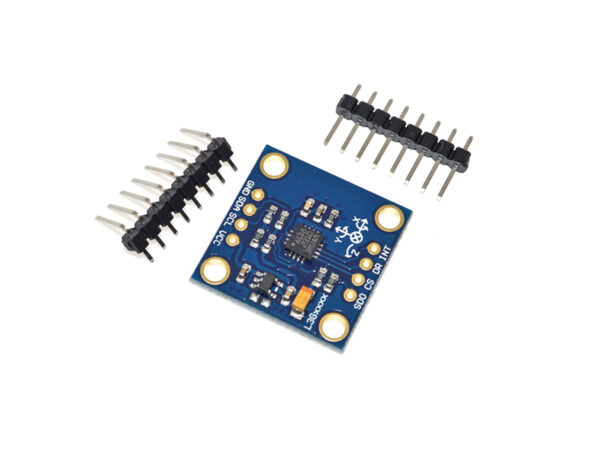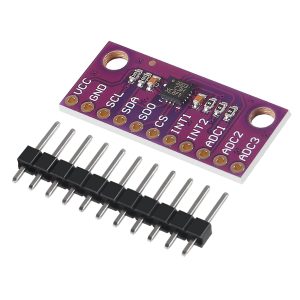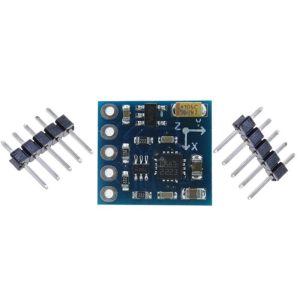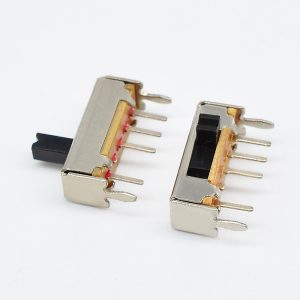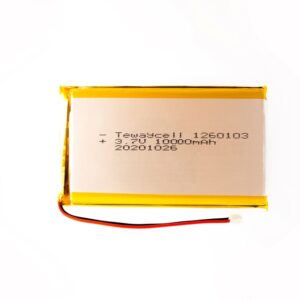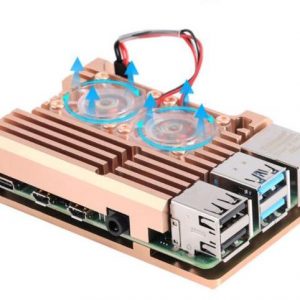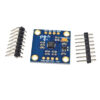GY-50 L3G4200D 3-Axis Gyroscope Angular Velocity Module
This is a breakout board for the L3G4200D low-power three-axis angular rate sensor. The L3G4200D has a full scale of ±250/±500/±2000 dps and is capable of measuring rates with a user-selectable bandwidth.
$5.99
7 in stock

This item: GY-50 L3G4200D 3-Axis Gyroscope Angular Velocity Module
7 in stock
$5.99
$5.99
Description
Additional information
Applications
Support & Utility
Q & A
Specifications
GY-50 L3G4200D 3-Axis Gyroscope Angular Velocity Module
• L3G4200D module (three-axis gyro module).
• chip: L3G4200D.
• Power supply:3-5v.
• communication mode: the IIC / SPI communication protocol.
• Measuring range: 250/500/2000 DPS
This is a GY-50 L3G4200D 3-Axis Gyroscope Angular Velocity Module low-power three-axis angular rate digital gyroscope sensor. The L3G4200D has a full scale of ±250/±500/±2000 DPS and is capable of measuring rates with a user-selectable bandwidth. These work great in gaming and virtual reality input devices, GPS navigation systems and robotics.
Development Resources: demo codes, schematics, datasheets, etc
How does an accelerometer work, Arduino?
The accelerometer sensors measure the acceleration by measuring the change in capacitance. Its structure has a mass attached to a spring that moves along one direction and has fixed outer plates. So, when acceleration is applied in any direction, the capacitance between the plates and the mass will change.
What is the use of an accelerometer?
An accelerometer is a device that measures the vibration, or acceleration of motion of a structure. The force caused by vibration or a change in motion (acceleration) causes the mass to “squeeze” the piezoelectric material which produces an electrical charge that is proportional to the force exerted upon it.
Uses of a gyroscope or accelerometer
The main difference between the two devices is simple: one can sense rotation, whereas the other cannot. … Using the key principles of angular momentum, the gyroscope helps indicate orientation. In comparison, the accelerometer measures linear acceleration based on vibration.
What is a 3 axis accelerometer?
The 3-Axis Accelerometer consists of three –5 to +5 g accelerometers mounted in one small block. Using the appropriate data collection hardware and software, you can graph any of these components, or calculate the magnitude of the net acceleration.
Reference for Arduino and reference to all matters.
Notes:
1. There may be slight size deviations due to manual measurement, different measuring methods and tools.
2. The picture may not reflect the actual colour of the item because of different photographing light, angle and display monitor.
Other Related Products
Components Package Kit for Arduino – 06
Components Package Kit for Arduino A low-cost components starter kit which comprises the most commonly used resistor values, potentiometers, switches, LED’s and Header terminal strips
| Weight | 0.005 kg |
|---|---|
| Dimensions | 5 × 5 × 1 cm |
Product Applications
Q & A
There are no questions yet


